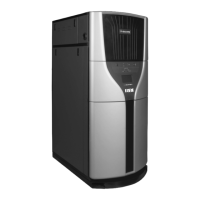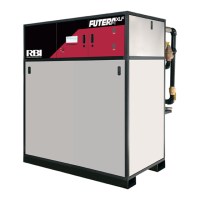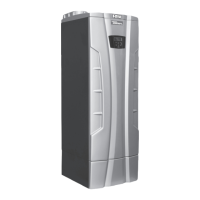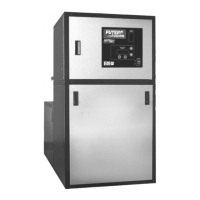CONTROL METHODS HeatNet Control V3
Page 18
Fault tolerance allows for one boiler in the Priority 1 system
to fail and any boiler(s) in the Priority 2 system to fail and
still provide near linear (continuity) BTU response when
adding boilers. This is illustrated in the following examples
using the Boiler System Response graphs.
The CK Series/Futera III/Fusion-Series Mixed Boiler
System (examples) is advantageous in providing low BTU
input for light loads and high BTUs for heavy loads. The
effective system turndown minimizes short cycling when
light loads are present by assigning smaller boilers to
Priority 1, running them first, and then stopping them last.
In order to achieve the high effective
turndown, smaller boilers are required
(plumbing considerations need to be
considered here due to differing flow/volume
characteristics through the large and small
boilers).
Example Systems:
Non-Mixed Boiler System Examples
With the traditional Non-Mixed boiler system, the effective
turndown increases by the turndown ratio for every boiler
added. The min fire rate is equal to the minimum BTUs that
can be delivered to the system.
Number of boilers * Turndown Ratio = Effective System
Turndown: 5 * 5:1 = 25:1.
Mixed Boiler System Examples
With the mixed boiler system, a lower minimum fire
rate/BTU can be delivered to the system by using small
boilers with larger boilers. This works in much the same
way as base loading.
CK Series 1500 – 4000 Modulation Parameters
CK Series 4500- 9000 Modulation Parameters
When selecting the Priority 1 boiler(s) for a high effective
system turndown, the BTU Min Input is selected first. (See:
CK/Futera III/Fusion Boiler Btu Chart). Next, the MOD-
MAX value of this Priority 1 boiler needs to be greater than:
Mod MAX % =
(Priority 1‘s Min Input + Priority 2‘s Min Input)
Max Input of the Priority 1 boiler

